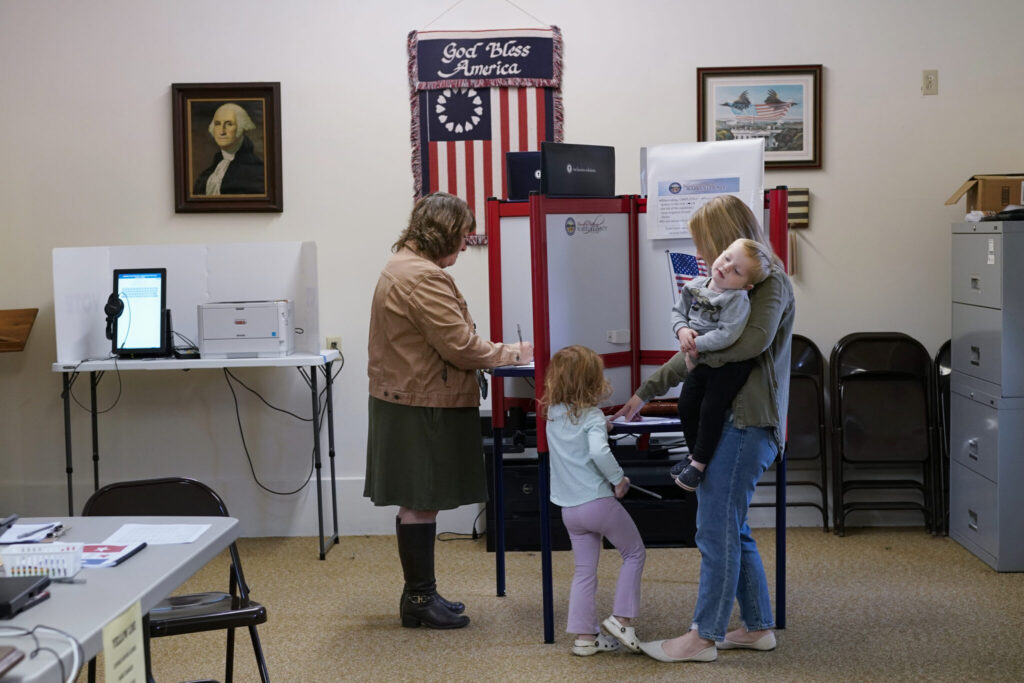Ohio became the latest flashpoint Tuesday in the nation’s battle over abortion access since the U.S. Supreme Court overturned a constitutional right to the procedure last year. Voters are deciding whether to pass a constitutional amendment guaranteeing an individual right to abortion and other forms of reproductive healthcare.
Quick Read
- Abortion Rights Vote in Ohio: Ohio’s vote on a constitutional amendment concerning abortion rights is a pivotal moment after the U.S. Supreme Court’s overturning of Roe v. Wade.
- Issue 1 Details: The proposed amendment, known as Issue 1, would establish a right to abortion and other reproductive healthcare in the state constitution.
- National Attention: This is the only statewide abortion-rights question in the U.S. this year, drawing significant campaign spending and national interest.
- Implications for Future: The outcome is seen as a bellwether for similar measures planned in Arizona, Missouri, and Florida for 2024.
- Public Opinion Trends: Polls indicate that a majority of Americans support legal abortion in the early stages of pregnancy.
- Statewide Votes: Previous votes in several states have affirmed abortion access or rejected attempts to limit abortion rights post-Roe v. Wade.
- Ohio’s Abortion Law: If Issue 1 passes, it could negate Ohio’s six-week abortion ban, which is currently not in effect due to legal challenges.
- Regulations on Abortion: The amendment would still permit Ohio to regulate abortions after fetal viability, provided there are exceptions for the woman’s life or health.
- Opposition Arguments: Anti-abortion groups claim the amendment is too vague, potentially leading to unintended consequences, such as minors obtaining abortions without parental consent.
- Voters’ Perspectives: Opinions vary, with some against Issue 1 on moral grounds, while others support it as a matter of individual choice and preventing government overreach.
- Legislative Responses: It’s uncertain how Ohio’s Republican-led Legislature might react if the amendment passes, with some suggesting a counter-amendment could be proposed.
- Previous Election Context: An August special election rejected making it harder to pass constitutional amendments, which could have affected the current abortion-rights measure.
The Associated Press has the story:
Ohio: The lone state decides abortion rights question, provides hints for 2024 races
Newslooks- COLUMBUS, Ohio (AP)
Ohio became the latest flashpoint Tuesday in the nation’s battle over abortion access since the U.S. Supreme Court overturned a constitutional right to the procedure last year.
Voters are deciding whether to pass a constitutional amendment guaranteeing an individual right to abortion and other forms of reproductive healthcare.
Ohio is the only state to consider a statewide abortion-rights question this year, fueling tens of millions of dollars in campaign spending, boisterous rallies for and against the amendment, and months of advertising and social media messaging, some of it misleading.
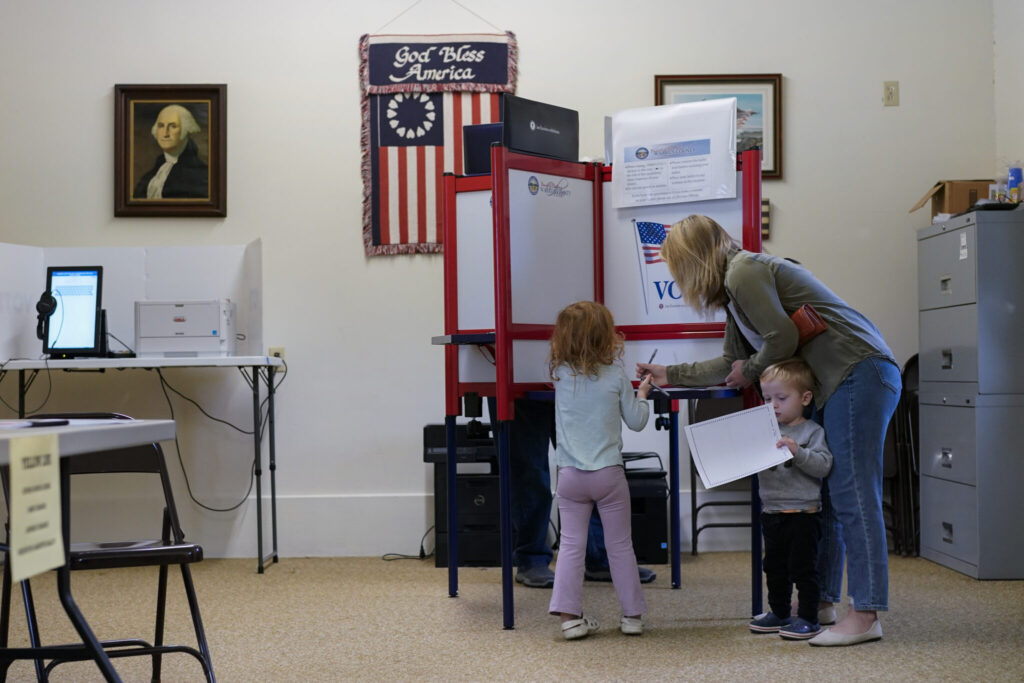
Advocates for and against are watching the outcome for signs of voter sentiment heading into 2024, when abortion-rights supporters are planning to put measures on the ballot in several other states, including Arizona, Missouri and Florida. Early voter turnout was robust.
Nationwide, polling shows about two-thirds of Americans say abortion should generally be legal in the earliest stages of pregnancy, a sentiment that has been underscored in half a dozen states since the Supreme Court’s decision reversing Roe v. Wade in June 2022.
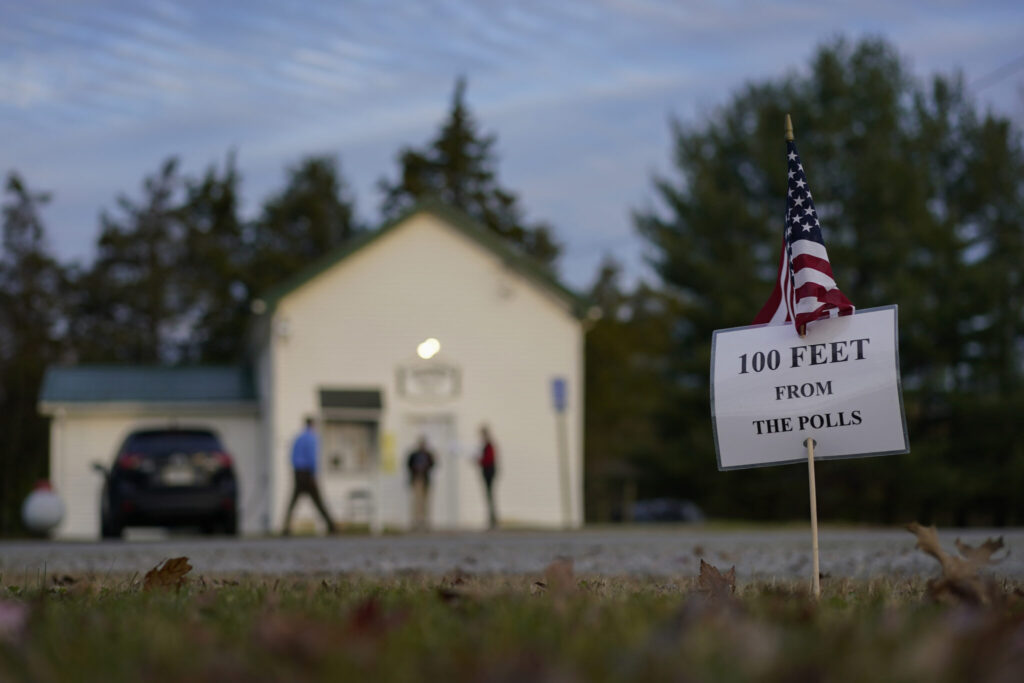
In both Democratic and Republican states — California, Kansas, Kentucky, Michigan, Montana and Vermont — voters have either affirmed abortion access or turned back attempts to undermine the right.
Voter approval of the constitutional amendment in Ohio, known as Issue 1, would undo a 2019 state law passed by Republicans that bans most abortions after around six weeks into pregnancy, with no exceptions for rape and incest. That law, currently on hold because of court challenges, is one of roughly two dozen restrictions on abortion the Ohio Legislature has passed in recent years.

Issue 1 specifically declares an individual’s right to “make and carry out one’s own reproductive decisions,” including birth control, fertility treatments, miscarriage and abortion.
It still allows the state to regulate the procedure after fetal viability, as long as exceptions are provided for cases in which a doctor determines the “life or health” of the woman is at risk. Viability is defined as the point when the fetus has “a significant likelihood of survival” outside the womb with reasonable interventions.
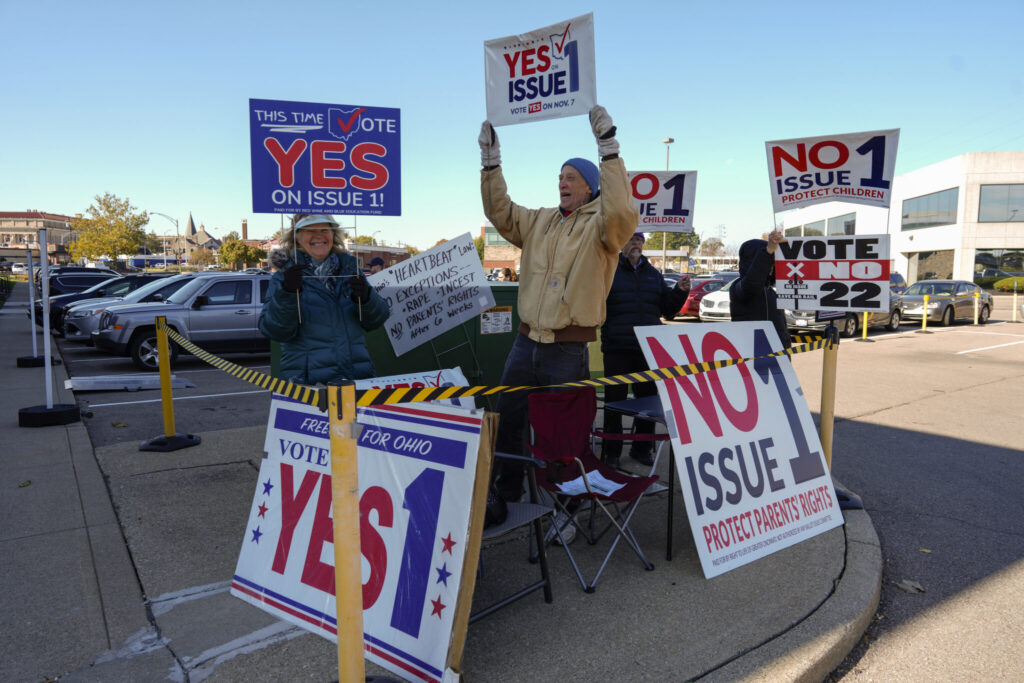
Anti-abortion groups have argued the amendment’s wording is overly broad, advancing a host of untested legal theories about its impacts. They’ve tested a variety of messages to try to defeat the amendment as they seek to reverse their losses in statewide votes, including characterizing it as “anti-parent” and warning that it would allow minors to seek abortions or gender-transition surgeries without parents’ consent.
Lester and Sheila Bowling, a married couple from Reynoldsburg, voted no on Issue 1. For them, Sheila said, it’s not a political issue, but a moral one.
Lester, a pastor and veteran, quoted Psalm 139, that God “formed babies in their mother’s wombs” and therefore deserve life at any stage of pregnancy.
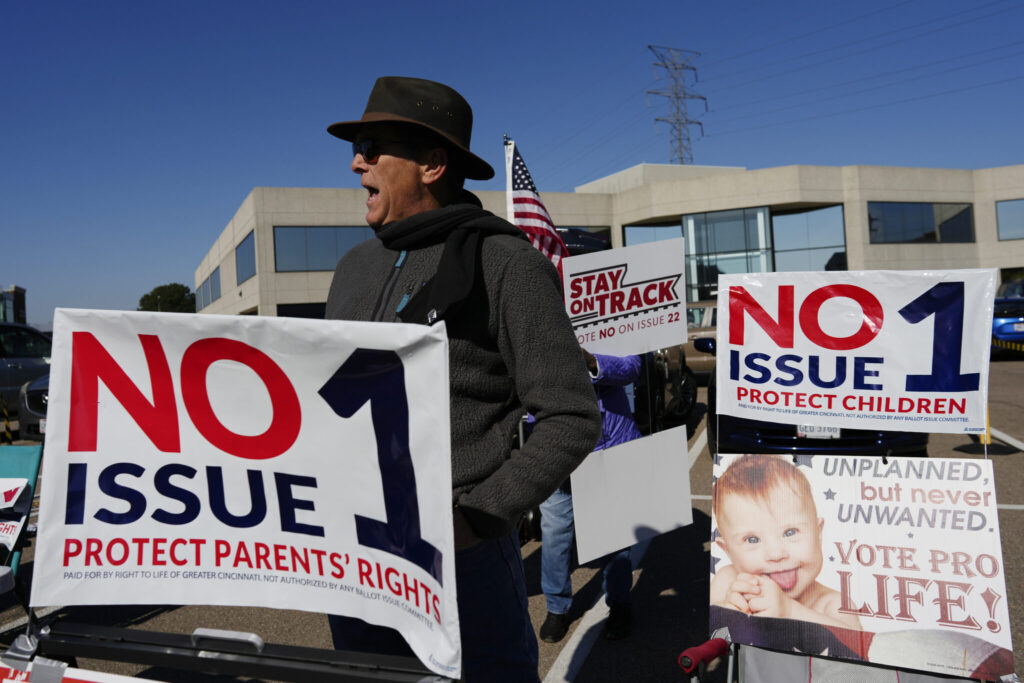
It’s unclear how the Republican-dominated Legislature will respond if voters pass the amendment. Republican state Senate President Matt Huffman has suggested that lawmakers could come back with another proposed amendment next year that would undo Issue 1, although they would have only a six-week window after Election Day to get it on the 2024 primary ballot.
Mathis Kleckley, a charter bus driver from Reynoldsburg, Ohio, just outside Columbus, voted yes on Issue 1 in favor of abortion.
Kleckley, 64, said that though he’s a Christian and those of his faith may disagree with him, he believes that God gives people choices, and to take choice away from a woman is for people to play God.
“We don’t want the government playing God either,” he said.
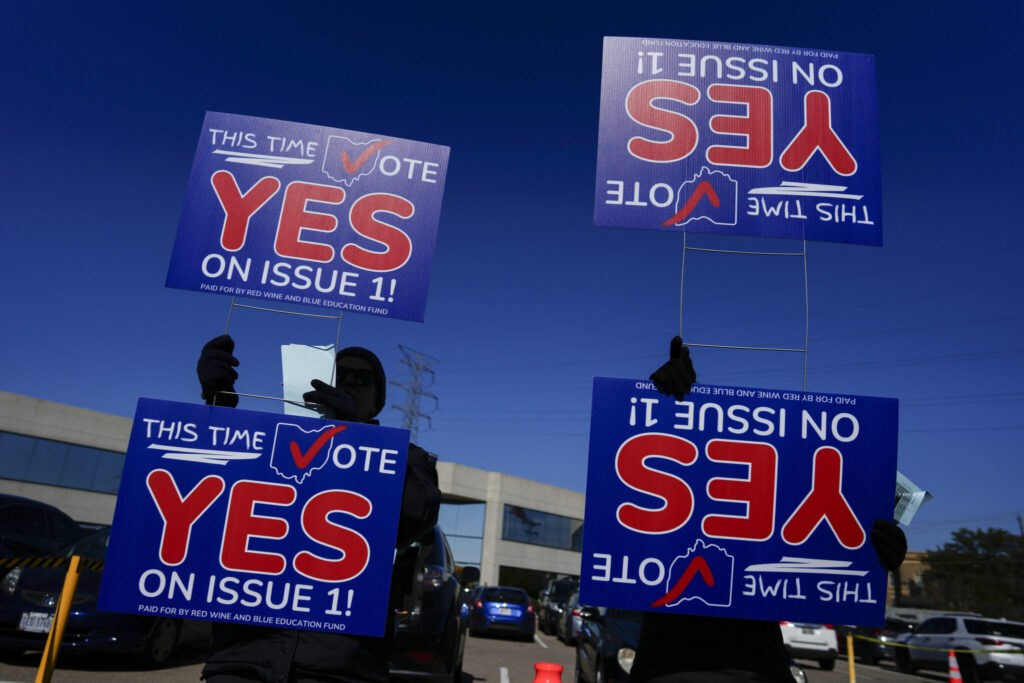
The voting follows an August special election called by the Republican-controlled Legislature that was aimed at making future constitutional changes harder to pass by increasing the threshold from a simple majority vote to 60%. That proposal was aimed in part at undermining the abortion-rights measure being decided now.
Voters overwhelmingly defeated that special election question, setting the stage for the high-stakes fall abortion campaign.

